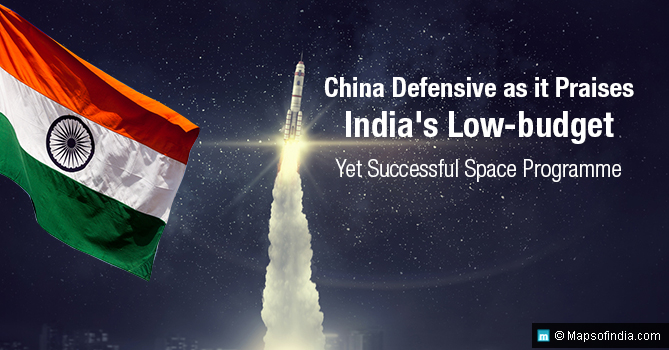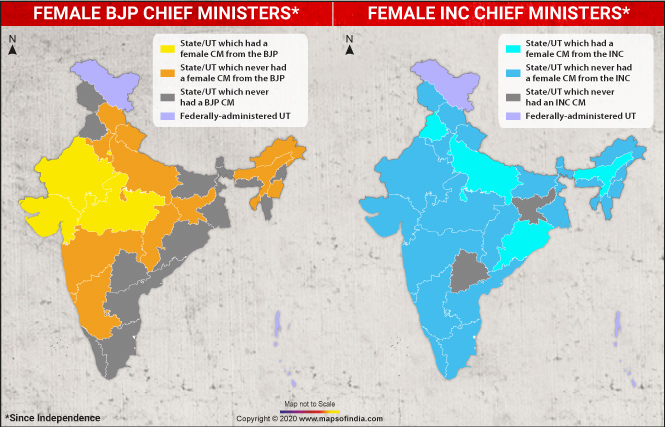For India to get accolades from China on its achievements is as rare as finding a needle in a haystack. But the sky turned blue, a whiff of pleasant scent filled the air from north to south and the sun burned leaves of palm trees spread across the barrier island of Sriharikota, in Andhra Pradesh, turned green when China heaped praises on India’s low-budget yet successful space programme.
Especially after the Indian Space Research Organisation (ISRO), that, through its PSLV rocket placed 104 satellites successfully into orbit in one go, Chinese media said Beijing could learn a number of lessons from India. It was the rarest of rare compliments from the country’s northern neighbour which, otherwise on the slightest pretext, never hesitates to spew venom against India.
It speaks volumes indeed, of India’s space programme that gets a shoe-string annual budget of around US$1.4 billion. This allocation is merely a fraction in comparison to what the US, Russia, France and China spend on their respective space programmes.
Last year, the US provided over US$19 billion to NASA, while China more than US$6 billion and Russia over US$3 billion in their respective space programmes. Despite this, none of big space players, except for India, has been able to surprise the world with successful missions one after another. Its recent feat of sending 104 satellites to space in one single mission is indeed a feat unparalleled in the space science and technology history.
Before India, it was Russia that created a record when in June 2014, it placed as many as 37 satellites into the space in a single mission. A year ago, it was America’s NASA which created a sort of record when it launched 29 satellites into the space in one go. Both America and Russia are pioneers in space science and technology, yet it is India which is making the world sit and take note of its activity in the space field despite having to witness a tight economic situation.
It has emerged as a major launch pad for international satellites. To date, the ISRO is credited for sending 180 foreign satellites into the space, an enviable feat in the world. If former ISRO chief G Madhavan Nair is to be believed, India has the capability to launch around 400 nano (3 or 4 kg) satellites.
Does India Have Proven Launch Vehicles?
India has proven launch vehicles like Polar Satellite Launch Vehicle (PSLV) and Geosynchronous Satellite Launch Vehicle (GSLV). A third launcher of higher payload capacity, GSLV MK-III is being developed. According to ISRO, by the end of this year, GSLV MK-III will be launched.
India’s first mission to moon ‘Chandrayaan-I’ was carried out through PSLV C-II on October 22, 2008. But ‘Chandrayaan-II’, the country’s second moon mission would be launched by GSLV, in December 2018. A planned move to send a man to moon will take place by 2020. All six CARTOSAT satellites, developed indigenously, have been launched with the help of PSLV launch vehicle.
Developed as a part of the Indian Remote Sensing Programme (IRSP), CARTOSAT can monitor the movements of one-metre long vehicles, and goods in India’s neighbourhood areas. India had carried out surgical strikes on terrorists’ launch pad across the Line of Control (LoC) in September 2016 by using images sent through CARTOSAT. As many as 50 terrorists and two Pakistani Army soldiers were killed in this operation.
In September 2014, India became the fourth country after the US, Russia and European Union to successfully send a spacecraft to Mars. Nicknamed MOM, the task of Mars mission was completed on a frugal budget of US$74 million, much less than the cost of Hollywood blockbuster film, ‘Gravity’, which had incurred its producers US$100 million.
Will India Build its Space Station?
India will develop its own space station, but it will need a long-term approach and an ambitious planning, ISRO Chairman A S Kiran Kumar recently said. As per a rough estimate, developing and maintaining a space station costs over US$100 billion, almost 100 times the annual budget of ISRO. That means funding is a major headache. “We have the capability to create a space station, but you (the government) have to give us the money and time to make this happen,” the ISRO chief was quoted by a daily saying, on the sidelines of the 34th foundation day celebration of the Raja Ramanna Centre for Advanced Technology in Indore.
Media reports suggest that as of now there is only one space station which is operational—the International Space Station (ISS). It is supported by the US, Russia and the European Union. China, too, has its own space station, ‘Tiangong-I’, which is an unmanned one. Even though India has not started work on its idea of having a space station of its own, it has begun trial of significant space components like RLV-TD (reusable space launch vehicle, or space shuttle), tiles needed to withstand extreme temperatures during re-entry into the earth’s atmosphere, air breathing propulsion, spacesuit, environmental capsule to make astronaut survive in space for a longer time without food and water.
Besides, ISRO’s scientists are planning to conduct a ‘pad abort test’ which envisages getting back astronauts safely in case there is an emergency during launch. General perception amidst scientists is that space station has many benefits apart from generating thousands of high-skilled jobs in the country.
Is ISRO a Major Hub for International Clients?
The ISRO is gradually emerging as a major hub for international clients like Israel, Algeria, the EU countries, the US, Canada and others. Of the total 225 satellites launched by PSLV rocket so far, 179 belonged to foreign clients. Recently, when India launched 104 satellites in one go into the space, 103 were from countries like Switzerland, the US, Israel and Kazakhstan.
A huge shortage of reliable launchers in the world for small satellite missions and a sudden rush of private industries in Europe, the US and other countries to send hundreds of satellites to space for educational, environmental, navigational, weather tracking and other various needs — have made India a major destination for foreign space agencies, eager to send their own satellites at low costs.
Conclusion
From building the first satellite, ‘Aryabhata’ in 1975 to launching its first launch vehicle, SLV in 1979 to planning to sourcing energy from moon by 2030, the Indian space agency has come a long way in establishing its mark as an undisputed and formidable player in the space technology.
What is more significant with the country’s space agency is that its scientists, engineers, designers and programmers have not come from the IITs, or Massachusetts Institute of Technology of America, or other prominent offshore universities. They are from the country’s regional technical institutes or B-grade academic institutions, yet their dedication and zeal to do something pioneering for the country have made them walk the talk.
These heroes work in silence day in and day out, and take home much less than what a Joint Secretary level IAS would draw as salary, and yet never complain, because their nation comes first to them than their personal comfort.






